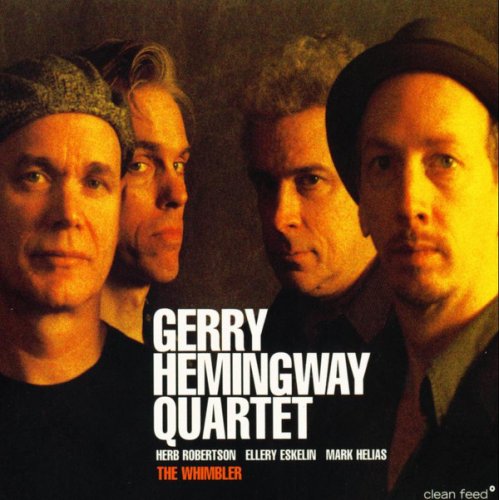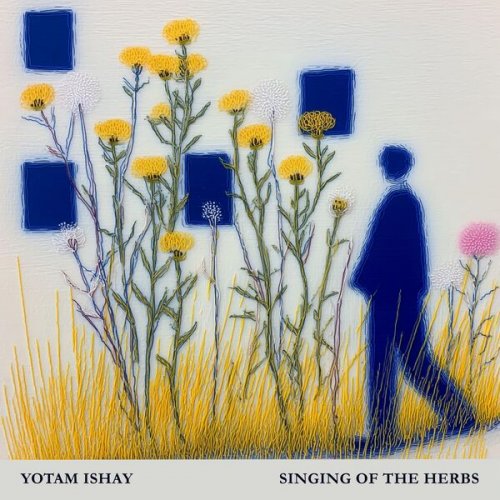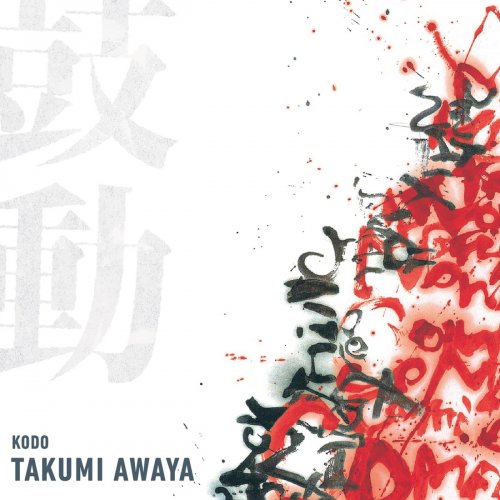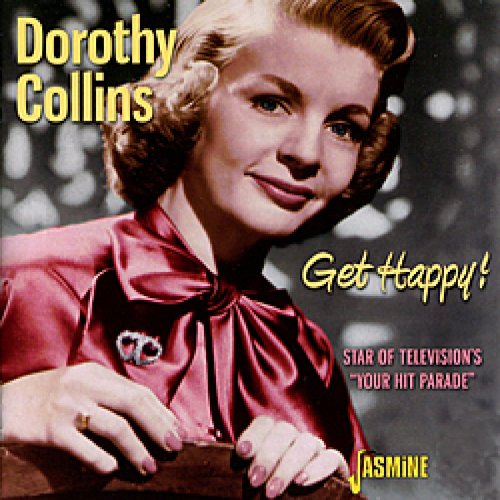Gerry Hemingway Quintet - The Whimbler (2005)

Artist: Gerry Hemingway Quintet
Title: The Whimbler
Year Of Release: 2005
Label: Clean Feed
Genre: Jazz
Quality: FLAC (tracks)
Total Time: 1:05:26
Total Size: 366 MB
WebSite: Album Preview
Tracklist: Title: The Whimbler
Year Of Release: 2005
Label: Clean Feed
Genre: Jazz
Quality: FLAC (tracks)
Total Time: 1:05:26
Total Size: 366 MB
WebSite: Album Preview
01. Waitin (7:58)
02. Rallier (6:36)
03. The Current Underneath (9:09)
04. Pumbum (6:05)
05. The Whimbler (8:19)
06. Spektiv (6:04)
07. Curlycue (11:35)
08. In the Distance (3:55)
09. Kimkwella (5:47)
It often seems like there’s an inverse proportion between the number of musicians involved in creating improvised music and the balance between the instrumentalists. The more players who are involved, the greater the imbalance. Anything larger than a trio usually features at least one subservient member. Gerry Hemingway’s quartet – with the expressive trumpeter Herb Robertson replacing trombonist Ray Anderson and Mark Helias in place of Mark Dresser this time out – defies that rule. There’s no backseat in this machine; everyone drives, steers and works the gears. Hemingway’s compositions set the tone – establishing unanimity of purpose and balance between the four voices – and the musicians never break faith with his ideal as they expand on his themes. This is immediately evident on the opening “Waitin”, which has Robertson and tenor saxophonist Ellery Eskelin intertwining over Mark Helias’ sauntering bassline and Hemingway’s twitchy rhythm. From the through-composed theme the band quickly splits into four equally fascinating planes of interpretation; a divergence that catches the leader’s ear as much as the first-time listener. Says Hemingway: “I think it’s interesting to ponder the way the song transforms from one feel to another right within the opening theme, as well as how the independence of these layers of feel are drawn upon in the continually shifting nature of the collective development that follows the theme.” Familiarity obviously plays a major role. All four musicians work together frequently, and in various formations, taking turns leading and collaborating. Robertson and Helias grew up near each other in New Jersey, while Hemingway and Helias met when the bassist arrived in New Haven, Connecticut, in 1974. One tune here – the multi-textured “Spektiv” – has roots in their earliest time together. The piece is a model of small-group writing and interaction, from Eskelin’s urgent exclamations over skittering bass and drums to Robertson’s prolonged, high-register, joy ride. If the conversational aspect of small-ensemble playing is a mark of greatness in improvised music – and it is the most compelling feature to my mind – this band more than qualifies. “’Pumbum’ is all about conversation in this permutation,” says Hemingway. “It’s a work that dates all the way back to the beginnings of BassDrumBone (the trio he has co-led with Helias and Anderson since 1977). It’s been recorded several times before, and in this version the blues form upon which it’s based has been cajoled free of its 12-bar mooring.” Or, on “Curlycue”, listen to Helias as he introduces a new urgency at the seven-minute mark, changing the course of the conversation and opening space for his own gorgeous-toned soliloquy, which sets the table for the return of Hemingway’s compelling theme. Best known for that rich, woody, acoustic tone, Helias shifts easily between double-bass and electric throughout the session. On “The Current Beneath” and the title composition he provides a funky bottom end, while on “Kimkwella” he introduces an Ornette-ish romp with a bell-like electric tone. For Hemingway, it’s all variation on a theme. “A groove is a groove is a groove,” he emphasizes. “I have great respect and boundless admiration for the diversity of ways in which one can move the beat. I am really not so fond of categorical separation; to me, it all relates.” Neither is he much interested in delving too deeply into the mystery of who The Whimbler is. “The personage I’ve made out of the root word ‘whim’ is open to definition. I’m not so interested in there being one explanation of rational meaning. Just as there is no one way to grasp how the musical parts of this piece fit together and why and how they relate. They do relate, however – at least to my ear – despite the layering of melodic playing that is clearly in 3/4 while relating to a groove that is clearly in 4/4.” Road-seasoned through several months of touring, these performances benefit from the superb sonics of Michael Broby’s Acoustic Music studio as much as they do from the musicians’ exposure to the music. Hemingway distinguishes himself from many of his peers through his attention to the details of recorded sound – to say nothing of his knowledge about the process and technology of the studio. He can discuss microphone placement and the esthetics of sound like an engineer. “I want the experience of listening to a CD to be successful. Recording is an artificial situation, and my goal is always to have my music come across as natural and transparent.” The Whimbler succeeds on all counts, and on all its many levels. James Hale is a frequent contributor to DownBeat, Coda, and other music journals.

![Stille Grender, Eva Bjerga Haugen - Svart senker natten seg (2025) [Hi-Res] Stille Grender, Eva Bjerga Haugen - Svart senker natten seg (2025) [Hi-Res]](https://www.dibpic.com/uploads/posts/2025-12/1765550212_ktbxqyoaitggb_600.jpg)


![Cosmic Swing Orchestra - JUL (2025) [Hi-Res] Cosmic Swing Orchestra - JUL (2025) [Hi-Res]](https://www.dibpic.com/uploads/posts/2025-12/1765510492_cover.jpg)

![Mark Pringle - New Customers (2025) [Hi-Res] Mark Pringle - New Customers (2025) [Hi-Res]](https://www.dibpic.com/uploads/posts/2025-12/1765497171_fb7vtyplm5lta_600.jpg)

